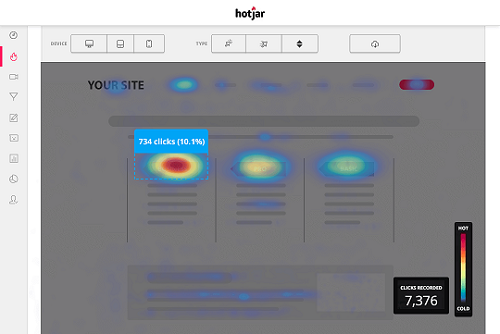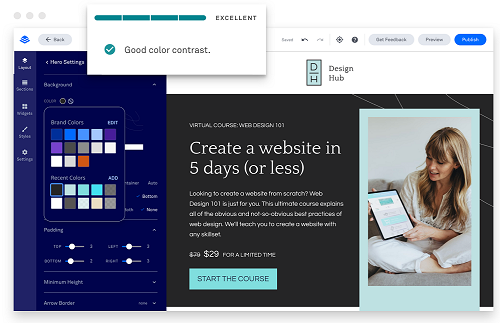3 Lessons Learned From Awful Branding Mistakes
Social Media Branding
A brand is the emotions that arise when a company or product is displayed to an audience, according to Inc.com. The most effective way to up a brand's impact is a great product paired with great service. Companies and agencies instead try to build the brand by branding: ads, social media and branded content. This approach can elevate brand awareness like Esurance's 3000 percent increase in Twitter followers after their post-Super Bowl spot or spawn a PR nightmare like the spectacular failures of Coke II and Crystal Pepsi. The branding decisions made today can affect a company's bottom line significantly. Learn from other's past mistakes and deliver results with informed branding decisions.
Build A Foundation
The Good: LifeLock, a leader in identity theft protection, states their team "is committed to enriching lives by protecting what matters most." They do this by going above and beyond by providing relevant consumer information via an identify theft news section in addition to their protection plans.Clothing and gear company Patagonia has stood behind their statement since 1974, "Build the best product, cause no unnecessary harm, use business to inspire and implement solutions to the environmental crisis." The company donates at least 1 percent of all sales to environmental groups.
The Bad: Netflix angered users in 2011 when they separated streaming and mail DVD services resulting in a 60 percent price hike. The company was just several years into their existence and the mistake cast a temporary shadow on the company mission.
Companies can reduce branding mistakes by establishing clear brand guidelines and missions and sticking to them. Starting with a logo and color scheme, a detailed report of the desired taglines, fonts, imagery and voice should be on record. This doesn't have to be a stagnant document, adjustments can be made so the company evolves with change.
One element that will likely stay the same is the mission statement. Brands make the mistake of cramming their mission statement with every buzzword and hyperbole there is. Other brands, like Patagonia, recognize the power of a short, deliberate statement. For example, athletic giant Nike: "To bring Inspiration and innovation to every athlete in the world." Other Fortune 500 companies still go the route of statements that read like a cryptic textbook.
Double Check and Think It Through
The Good: Digital Marketing Consultant Neil Patel constructed his entire consulting image on one scrolling landing page. He promises profitable traffic and bolsters his claim with a case study, graph, testimonials and call to action for a consultation.The Bad: Gap failed to look at the big picture in 2012 when they sent a tweet acknowledging Hurricane Sandy victims while encouraging online shopping. The same lack of oversight or failure to double check hurt Nokia and StubHub when official accounts sent out F-bombs.
"What were they thinking?" The question often arises when we witness an atrocious brand error. Not double checking or failing to see big picture often leaves brands with a PR mess. Proofreading is great but it's important to solicit outside opinions on marketing strategies. Someone who has no emotional attachment to the product can offer ideas or call out issues.
Other precautions are necessary for live social feeds like Twitter and Facebook. The established risk means a social media policy for employees is necessary. Both Nokia and StubHub incidents were tweets sent by employees who thought they were using their personal account. A policy that discourages social media use during work hours might have prevented this. Social media branding requires a dedicated strategy alone. Focusing on the frequency and voice of posts while simultaneously managing your brand's social reputation. Engage and converse with followers and use social media accounts for discounts and the sharing of any useful information.
Don't Deviate From What Works... Unless You Have To
The Good... and The Bad: Few companies can or should aspire to be like Coca-Cola, but lessons on both sides of the spectrum can be learned from the branding godfather. The century-old company has done little to change its logo since 1940. The red and white scheme and classic coke bottle are synonymous with the brand. The company then took a risk in the '80s when they made the first formula change in 99 years and released Coke II. The decision spawned "consumer angst" as stated by Coke and the original formula returned three months later.A classic brand doesn't mean the lack of progression even after Coke's magnified mistake. The company created a digital world of "ahh" by buying the domains for all versions of ahh. The purpose was a series of time-wasting games and puzzles topped with a user-generated marketing campaign to crowd source the next company commercial.
Marketers have to find balance between sticking with what works but not getting left behind by change. What works is a promise that can be kept and a message that engages customers. The Coca-Cola branding worked because they delivered a consistent product and became part of American culture. A consistent image makes a brand memorable to customers. Conversely, a sudden change can make a brand memorable for the wrong reasons. Especially if you haven't researched your customer base and collected feedback.
Written by TeamSMF
Contact us on Twitter, on Facebook, or leave your comments below. To find out about social media training or management why not take a look at our website for more info http://socialmediacambridge.co.uk/
3 Lessons Learned From Awful Branding Mistakes
 Reviewed by Alex Carson
on
Tuesday, April 22, 2014
Rating:
Reviewed by Alex Carson
on
Tuesday, April 22, 2014
Rating:
 Reviewed by Alex Carson
on
Tuesday, April 22, 2014
Rating:
Reviewed by Alex Carson
on
Tuesday, April 22, 2014
Rating:














 Entrepreneur, international speaker on Social Media Marketing. First one in the UK to write and speak in conferences about Twitter as a marketing tool. Consultant to Corporate Companies, Government Organizations, Marketing Managers and Business Owners.
Entrepreneur, international speaker on Social Media Marketing. First one in the UK to write and speak in conferences about Twitter as a marketing tool. Consultant to Corporate Companies, Government Organizations, Marketing Managers and Business Owners. Aspiring novelist with a passion for fantasy and crime thrillers. He hopes to one day drop that 'aspiring' prefix. He started as a writer and soon after he was made Executive Editor and Manager of the team at Social Songbird. A position he held for 5 years.
Aspiring novelist with a passion for fantasy and crime thrillers. He hopes to one day drop that 'aspiring' prefix. He started as a writer and soon after he was made Executive Editor and Manager of the team at Social Songbird. A position he held for 5 years. Musician, audio technician, professional tutor and a Cambridge university English student. Interested in writing, politics and obsessed with reading.
Musician, audio technician, professional tutor and a Cambridge university English student. Interested in writing, politics and obsessed with reading. Recently graduated with a BA in English Literature from the University of Exeter, and he is about to study an MA in Journalism at the University of Sheffield. He is an aspiring journalist and novelist; in his free time he enjoys playing chess, listening to music and taking long walks through nature.
Recently graduated with a BA in English Literature from the University of Exeter, and he is about to study an MA in Journalism at the University of Sheffield. He is an aspiring journalist and novelist; in his free time he enjoys playing chess, listening to music and taking long walks through nature. Lucy is an undergraduate BSc Politics and International Relations student at the London School of Economics and Political Science.
Lucy is an undergraduate BSc Politics and International Relations student at the London School of Economics and Political Science. Anna Coopey is a 4th year UG student in Classics at the University of St Andrews in Scotland. She is a keen writer and researcher on a number of topics, varying from Modern Greek literature to revolutionary theory.
Anna Coopey is a 4th year UG student in Classics at the University of St Andrews in Scotland. She is a keen writer and researcher on a number of topics, varying from Modern Greek literature to revolutionary theory.
